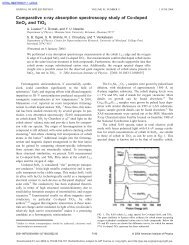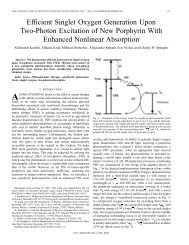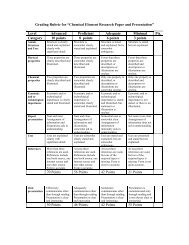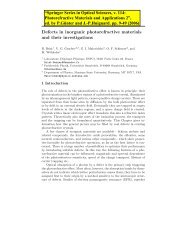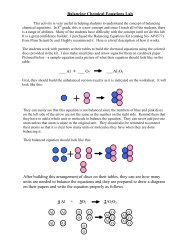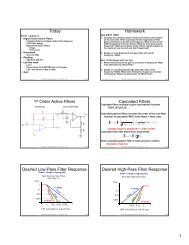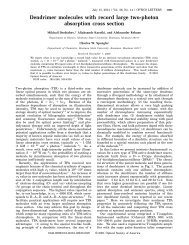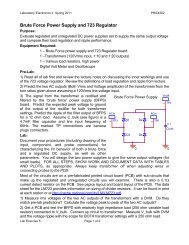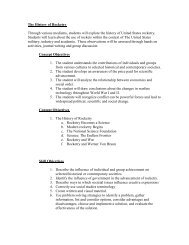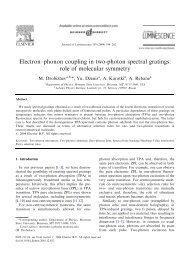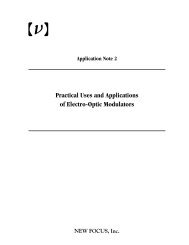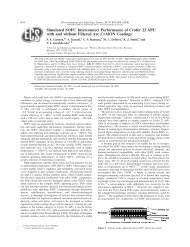Match Rocket Lab - Newton's 3rd Law
Match Rocket Lab - Newton's 3rd Law
Match Rocket Lab - Newton's 3rd Law
Create successful ePaper yourself
Turn your PDF publications into a flip-book with our unique Google optimized e-Paper software.
<strong>Match</strong> <strong>Rocket</strong> <strong>Lab</strong><br />
Physics Concepts:<br />
Newton’s 1 st <strong>Law</strong> - Every object in a state of uniform<br />
motion tends to remain in that state of motion unless an<br />
external force is applied to it.<br />
This we recognize as Galileo’s concept of inertia, and<br />
this is often termed simply the "<strong>Law</strong> of Inertia."<br />
Newton’s 2 nd <strong>Law</strong> – If an unbalanced (net) force acts on<br />
an object, that object will accelerate (or decelerate) in<br />
the direction of the force.<br />
Newton’s <strong>3rd</strong> <strong>Law</strong> – For every action force, there is an<br />
equal and opposite reaction force.<br />
A body at rest is considered to have zero speed (a constant speed).<br />
So any force that causes a body to move is an unbalanced force.<br />
Also, any force, such as friction, or gravity, that causes a body to<br />
slow down or speed up, is an unbalanced force. This law can be<br />
shown by the following formula.<br />
F= ma<br />
• F is the unbalanced force (vector)<br />
• m is the object's mass (scalar)<br />
• a is the acceleration that the force causes (vector)<br />
Force and acceleration are both vector quantities. In this law<br />
the direction of the force vector is the same as the direction of<br />
the acceleration vector.<br />
Vector and Scalar Quanities: An understanding of<br />
vectors is essential for an understanding of physics and<br />
Newton’s Second <strong>Law</strong>. A vector is a quantity that has two<br />
aspects. It has a size, or magnitude, and a direction. In<br />
contrast, there are quantities called scalars that have only<br />
size.<br />
If a quantity has only a size, it is called a scalar. Mass,<br />
distance, speed, time and temperature are examples of<br />
scalars.<br />
If a quantity has a size and a direction, it is a vector<br />
quantity. Force, acceleration, velocity, displacement,<br />
gravitational field, torque, and electric and magnetic fields<br />
are all vectors.
Materials:<br />
• Kitchen matches<br />
• Aluminum foil<br />
• Large paperclips for the launcher<br />
• Small paperclips to create the exhaust release space<br />
Setup:<br />
Cut small rectangular pieces of aluminum foil (about<br />
2”x 3”). Fold the foil in half and wrap tightly around<br />
the match holding a straightened small paperclip up<br />
against the match. Fold the end of the foil down around<br />
the match head to assure that no exhaust can escape out<br />
the top. Make sure it is wrapped tightly. After<br />
wrapping the foil, remove the paperclip and be sure not<br />
to touch the foil and close the opening created by the<br />
paperclip. Set the match on the larger launching<br />
paperclip. Light a match and hold it under the head of<br />
the wrapped match. When it ignites inside the foil, the<br />
exhaust should escape out the opening and launch the<br />
rocket (match).<br />
• The small paperclip needs<br />
to be straightened with all<br />
bends removed so that it<br />
can be used to create the<br />
exhaust opening.<br />
• The large paperclip is used<br />
for the launcher as shown in<br />
picture the left.
Questions to ask:<br />
• What do you think will happen when you ignite the match?<br />
Why?<br />
• Which one of Newton’s laws applies to the launching of the<br />
match rocket?<br />
• What is the action that causes the reaction?<br />
• What is the reaction?<br />
• What factors can you change to make your match fly<br />
further?<br />
Explanation: Initially, everything in the setup is at rest because the net force is 0<br />
(balanced) and the objects are in equilibrium. In order to cause<br />
motion, a force has to act on some part of the setup. When you<br />
ignite the foil covered match, the exhaust pushes out the opening<br />
created in the foil. According to Newton’s Third <strong>Law</strong> of Motion,<br />
for every action, there is an equal and opposite reaction. As the<br />
exhaust pushes out (action), the rocket launches forward (reaction).<br />
If students have trouble getting their rockets to launch, remind<br />
them to wrap the foil tightly and be sure not to touch the foil after<br />
they pull the straightened paperclip out to avoid closing the<br />
exhaust escape route.<br />
• Common misconception: Students often think that the action is<br />
lighting the match and the reaction is the rocket launching. These are<br />
not equal and opposite forces, so students need to be reminded to<br />
consider that. Lighting the match does cause the exhaust to form, but<br />
it is not one of the equal and opposite forces.<br />
Student <strong>Lab</strong> Reports:<br />
Students should create a lab report:<br />
State Newton’s Third <strong>Law</strong> of Motion<br />
Make a diagram of your lab setup and label each part<br />
State the action<br />
State the reaction<br />
Measure the distance of each of your rockets and record<br />
those distances<br />
Record changes made to your rockets<br />
Analyze your results and draw conclusions<br />
National Standards:<br />
• Content standard A – Science as Inquiry<br />
• Content standard B – Physical Science<br />
• Content standard E - Science and Technology





